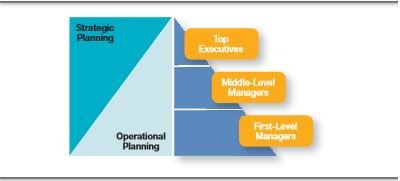Approaches for Goal Setting
Setting goals is necessary not only important in business, but life as well. Coming off with objective and futuristic assumptions are required in planning courses of actions, career choice, relations choices, and many other important aspects of social life. Every step of our life is carefully planned and carried out either by us, or our parents. In a corporate environment, goal setting and planning is the daily bread and butter of the managerial staff.
Suppose you have been elected president of your school treasury. If you want to integrate the activities of the treasury into the day to day activities of your school, what are the steps do you need to take? The first step is to plant the entire process on paper. Setting clear goals and devising precise and relevant alternative strategies is the key to planning such an operation.
The main functions of goals are to provide a benchmark to measured accomplishments against; and to provide a sense of direction to the company which helps the managers make better plans. Every action undertaken inside an organization is goal-oriented. In order to achieve the specified goals,managers tend to choose different styles of approaches in setting goals for their organizations. The common approaches to goal setting can be broadly divided into two types:
Traditional goal setting: this is the way a totalitarian organization works. In this method, the decisions and goals are set by the highest level of management in an organization and passed down to the lower levels, where they become sub-goals for each particular area within the organization. For example, in a manufacturing business, the vice president of production is informed by the top management about expected costs of production; whereas the vice president of marketing department gets asked for the projected sales report. The goals pertain to the specific objectives of a particular area, and are used as a standard to measure performance. The flow of goals is downwards and it is further divided into individual goals based on their responsibility and field of expertise.
 In the formative years of industrial complexes after industrial revolution, most corporations are family-controlled or peer-controlled, with lower level employments hired from outside sources. Since they were not part of the initial vision of the organization, the manager kept them out of the loop and only passed down the relevant instructions needed to be followed. This method, although still widely popular among sentimentalists and authoritarian managers, the changing times and workers’ rights movements have brought forth the fact that despite its effectiveness, traditional goal setting has various disadvantages:
In the formative years of industrial complexes after industrial revolution, most corporations are family-controlled or peer-controlled, with lower level employments hired from outside sources. Since they were not part of the initial vision of the organization, the manager kept them out of the loop and only passed down the relevant instructions needed to be followed. This method, although still widely popular among sentimentalists and authoritarian managers, the changing times and workers’ rights movements have brought forth the fact that despite its effectiveness, traditional goal setting has various disadvantages:
- Dividing a goal into sub-goals for each department and further compartmentalization of the objectives can be a cumbersome process. It also reduces transparency among the various departments and leads to inefficient and uncommunicative work space environment.
- Most decisions that are made by top management in this way are ambiguous- leaving it to be subject to individual biases and interpretations. This can defeat the purpose of setting the goal. The manager who makes the decisions at the executive levels is often unaware of the situation in his subordinate levels. Megalomania and egotism are rampant in the traditional method, which can cause mass confusions and disastrous consequences.
- The downward flow and constant modifications in various levels of management causes loss of clarity and inability to understand a particular goal and properly carry out the steps to achieve it. When a goal is passed down the corporate ladder, it is modified and amended by each consecutive level, which ultimately results in a different final goal than originally set. This prevents proper understanding of the goals and their fulfillment.
One of the features of traditional goal setting is the formation of a means-end chain, which an interconnected network of goals which requires reaching all goals in one level in order to reach the goals in the next level. Often one goal is required to be completed at one level in order to open the possibilities to the next goal. In essence, the solution of one goal becomes the parameters of the next one. The lower level goals are the defining parameters of the higher level goals, thus making it imperative to go through the entire structure step-by-step. The use of one set of sub-goals as means to achieve the sub-goals at the next level is the essence of this particular style.
Management by Objectives (MBO): in MBO approach, the superior and the subordinate managers jointly identify the common goals and define each department’s major areas of responsibility in achieving the goals. The mutual setting of objectives between each level of management is the essence of this philosophy. The subordinates are given opportunity to set objective for their key areas of responsibility.
 Control of people shifts to control over operations in this approach. MBO has the following basic elements:
Control of people shifts to control over operations in this approach. MBO has the following basic elements:
- Performance feedback: the mutual setting of responsibilities by both supervisor and subordinates makes it possible to use the objectives comparative standards for evaluation the performance of the subordinates.
- Specificity of goals: the employees from all level of the job contribute in coming up with precise goals and mutual setting of objectives and sub-goals as per their respective expertise.
- Mutual decision making between higher and lower levels of management: MBO is result oriented process, which means that the ends completely justify the means, and focus in not laid on the approach taken to solve the problem.
- Pre-defined and non-negotiable time period: since the decisions are taken collectively, the objectives are well known and predefined, with accurate time estimations required to complete the job.
MBO has shown to increase performance and productivity among employees, due to the use of mutually identified goals as a standard for evaluation of performance. The driving factor of MBO is that is assimilates both manager and his employees, thus ensuring a more communicative platform and motivates the employees to provide a better output performance.
The essential steps taken in management by objectives are:
- Clear formulation of overall objectives of the organization.
- Division of resources and workforce and compartmentalizing the goals as per the specific skill set of the concerned department.
- Accurate specifications of each sub-goal due to mutual planning.
- Effective collaboration between all the departments and necessary amendments as per their recommendations.
- Implementation of the decision and periodic review and feedback. Based on the comparative performance analysis, rewards are handed out to the most influential employees, thus effecting overall company performance.
Goal setting steps
A goal has to be good enough to be worth the time and effort spent behind it. So what does a good goal entail? Experts say that a well-written goal can help reduce communicative barriers, and streamline the synchronization of various department working together to reach a common goal. The characteristics of well written goals are:
- They must be outcome oriented instead of actions.
- The goals must provide the manager with a sufficient challenge to make his job interesting, but not so complex that it cannot be feasibly attained within the deadline.
- Proper communication and clarification of goals to all concerned organizational employees is very to maintain efficiency.
- The time duration must be clearly specified to formulate plans accordingly.
Any business decision requires a setting of goals to obtain maximum efficiency while its implementation. Goals remove the ambiguity present in a problem, and provide a clear, concise view to choose the best approach in order to achieve it. So how do managers set goals in big companies? Here are a few pointers:
- Goals should reflect the organization’s mission. A mission provides a guide for what is perceived as important within that organization. Any goals should be formulated while keeping the mission in mind.
- Make realistic goals. Accommodate the goals as per the resources available. If resources available are insufficient, then the goals cannot be achieved, despite all efforts to make it so.
- Goals can be determined by one person or by a group of people working together towards a common objective. The main features of set goals should be congruency with the mission, and all defining criteria such as time frames, specific objectives in organizational areas.
- Writing the objectives down can prove to be effective for immediate action. Sharing your objective with other members in your work space and coming with alternatives through group discussion is important in working towards fulfillment.
- Amend your goals as per their ability to full the preset objectives. Realistic interpretation of the situation is very important in review and amendment of goals.
 Process of plan development
Process of plan development
How did managers like Policastro know about the plans needed to be formulated during such an unprecedented events like the Haiti quakes? What are the necessary steps needed to be taken? How will they factor in the constraints of geography into their decision making process?
In any investments, there are certain risks and uncertainties in the world scenario which need to be considered for an effective plan. The ever-changing landscape of corporate scenes worldwide means that there will be no shortage of unexpected twists and turns while arriving at an objective. Hence, while coming up with a plan, managers tend to focus on a few contingency factors. These are:
- The level of the manager: in the hierarchy of an organization, the position of a manager defines what his responsibilities are and what kind of plans he has to make in order to fulfill them. Top level executives formulate the company mission; new avenues to explore etc. while lower-level managers keep the operation running smoothly ensuring efficient overall performance. The level of the manager decides his role in goal setting and planning.
- Uncertainty: environmental uncertainties are very critical in formulation of plans. Plans should be flexible, but with sufficient specificity. There should always be room for spontaneous amendments as per the needs of the situation. Accommodation due to rapid changes in world scenario need to be factored in quickly without changing the fundamental points of the initial plan.
- Commitment: when a plan is formed to fulfill a particular objective, it should extend sufficiently to fulfill the commitments made prior to planning. The times frame of a plan is crucial as too long or too short plans tend to be ineffective and inefficient. Commitment to a project is necessary to remain motivated in fulfilling it, and also to create and innovate. However, escalation of commitment can have catastrophic consequence, so managers need to know when to let go of an unsuccessful campaign.
 Planning approaches
Planning approaches
In every organization, the planning process is different. Each manager has their own thinking style, and hence the approach varies from manager to manager. The personality and worldview of the deciding manager defines the process of his organization in approaching plans.
- Formal planning: Traditional methods exhibit the plans being made entirely by the highest levels of management within a company. They are often assisted by teams; whose objectives are to provide the managers with relevant and specific information needed for effective planning. Once the plan has been formulated, it is circulated around the organization, and flows downwards, where it is divided into individual goals for each area in the organization. It only works when managers are capable of making plans that benefit and positively affect all members involved in situ, not on paper.
- Informal Planning: Another approach involves staff member from all level participating in the planning process. The goal the set mutually by the subordinates and the bosses, and they are late used as performance standards. The emphasis is on results and not methods in this a This approach helps members to be more involved in the decision-making process and help make a difference in the outcomes of their organizations.Commonly known as Management by Objectives, this approach has been widely used in most contemporary organizations as they reduce the workload of a single group of people, and increase efficiency as the goals are set by the concerned groups as per their expertise levels.
Links of Previous Main Topic:-
- management and organizations a managers dilemma
- Understanding managements context constraints and challenges
- Managing in a global environment
- Managing diversity
- What is social responsibility
- Managing change and innovation
- Managers as decision makers
- Foundations of planning
Links of Next Fundamentals of Management Topics:-
- Effective planning in contemporary business
- Case application 1 icelandic volcano 1 global commerce 0
- Case application 2 building a future
- Chapter eight summary by learning outcomes
- Preparing for my career in chapter eight
- Strategic management
- Basic organizational design
- Adaptive organizational design
- Managing human resources
- Managing teams






















